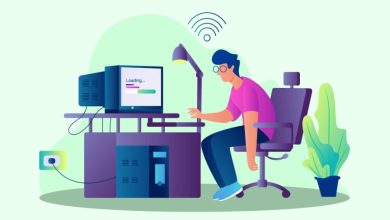
by Fawad Qureshi, Field Chief Technology Officer at Snowflake.

Quite rightly, telecom companies guard their customer information very carefully. Strict data privacy rules, such as PDPA, have reinforced the requirement to have tight controls over how information is stored, governed and used.
Often, data is kept not just within the company but sometimes locked within individual departments. The telco sector plays an important role as the central nervous system, connecting several industries together. Yet, without the ability to accurately manage, analyse and collect data centrally across the network, telcos are sometimes unable ‘connect the dots’, potentially losing out on opportunities to drive enhanced end-user experiences and increased revenues.
Telecoms companies that seek to unlock, share and collaborate with their most unique asset – their data; adopting a data-first approach will collaborate with their eco-systems more strategically and monetise new business streams, alongside the newly developed data & related applications. Tapping into the value of their data can also enable telecom companies to manage the huge network complexity they currently deal with, helping with everything from predictive and preventative maintenance & roll-out and cost optimisation.
Harnessing Data Clean Rooms for Business Growth
Around the world, multiple industries rely on telecom companies as the backbone of their operations. In retail, point-of-sale machines run through a telecoms company network, and in transport, the scheduling of commuter buses and trains relies on the very same technology. Yet, despite the importance of telcos for society and in connecting industries, network operators are not yet fully embracing the value of the data they have at their fingertips.
Data privacy and increased regulations have prevented telcos from connecting and sharing their data with other organisations due to fears about leaking PII. However, Data Clean Room technology is fast emerging to help companies effortlessly share data both internally and with third parties in a secure and governed environment. Data Clean Rooms prevent specific identifiable information from showing to other companies when sharing data through a Clean Room. PII is protected, processed, and managed in a compliant way. This means that companies, or divisions of a single company, are empowered to bring data together for joint analysis under defined guidelines and restrictions.
In retail, for example, telecom companies can collaborate with retailers confidently and safely through a Data Clean Room using governed analytics. This typically revolves around the user’s cellular number, which can help the telco and the retailer access valuable data such as location details, shopping baskets and product purchases. By tapping into this data, retailers can focus on improving personalisation services for their customers and also in-store and virtual experiences.
Better Data = Better Connections
Being able to understand individual usage of a network can help networks improve their services more broadly, as seen in the success of increased next-gen network rollouts. These networks are the first of their kind to effectively ‘slice’ the network, providing different service level agreements to consumers. When you know who is accessing services and what they are doing on the network, prioritise value and experiences over utilisation to deliver the best service for them at that given moment.
Yet, the inability to tap into customer data is preventing many network providers from taking advantage of this. By better understanding network data, telcos can decommission legacy networks, which can be more expensive to maintain, with faster connection and download speeds of 5G networks.
A Brighter Future with Digital Twins
Going forward, telcos will want to capitalise on new and emerging technologies, such as digital twins. Building a digital twin through their network serves as a visualisation tool to replicate what is happening in the real world. This enables continuous prototyping, testing and self-optimisation of the network.
Overlaying this digital twin with data such as customer experience and mobility data enables networks to be much more customer-centric going forward, ensuring network providers can personalise customer experiences to meet their precise demands. This will help increase customer satisfaction and improve loyalty, ultimately driving a significant increase in profitability.
Telecoms companies that understand how the key to achieving this is mastering and unlocking data rapidly pivot their business to become more of a TechCo model.
In the long term, engaging with this data is no longer a ‘nice to have’. Those that do it should be able to transition to becoming fully-fledged technology companies and expect the gulf between them and their competitors to grow.




